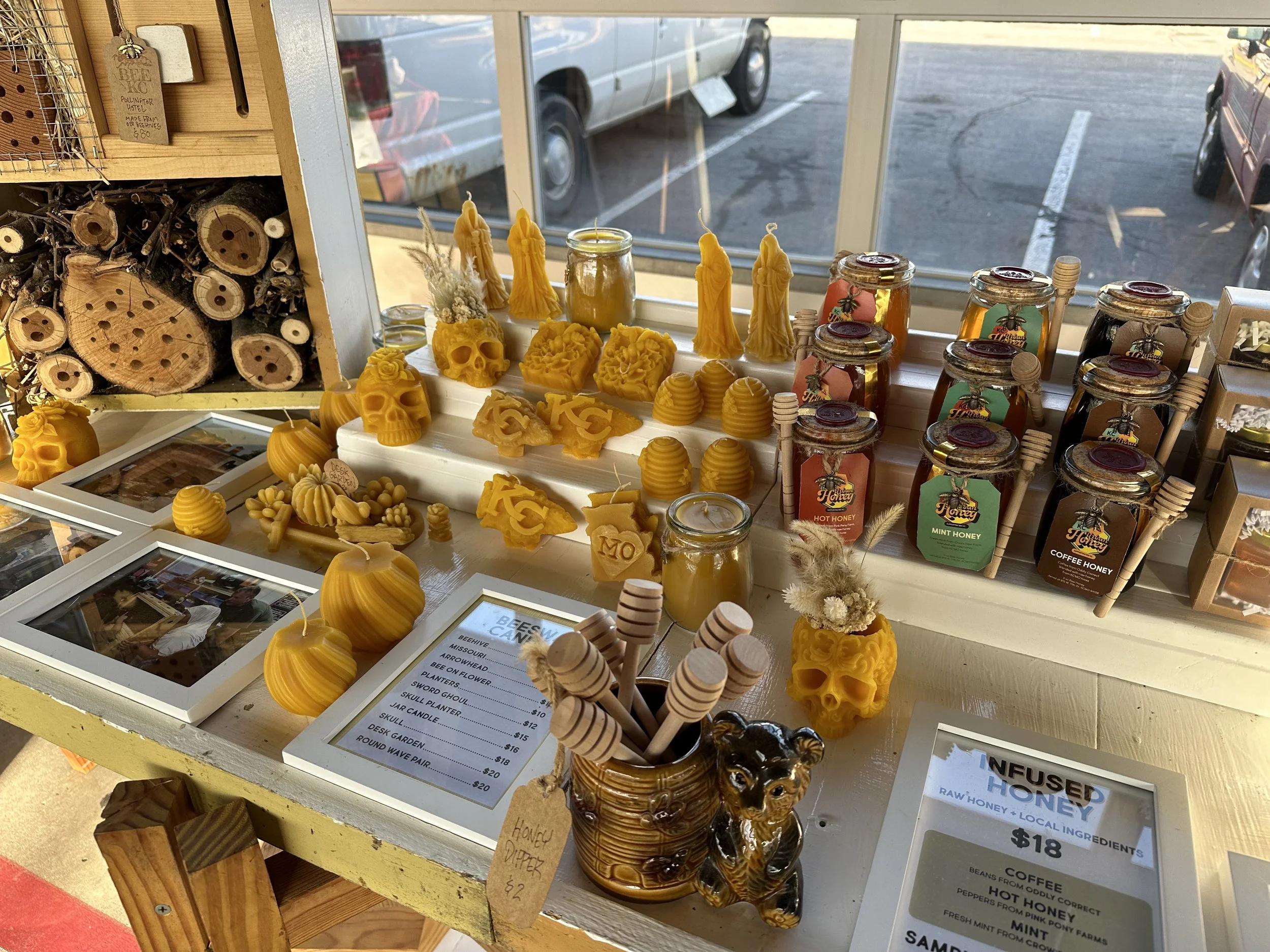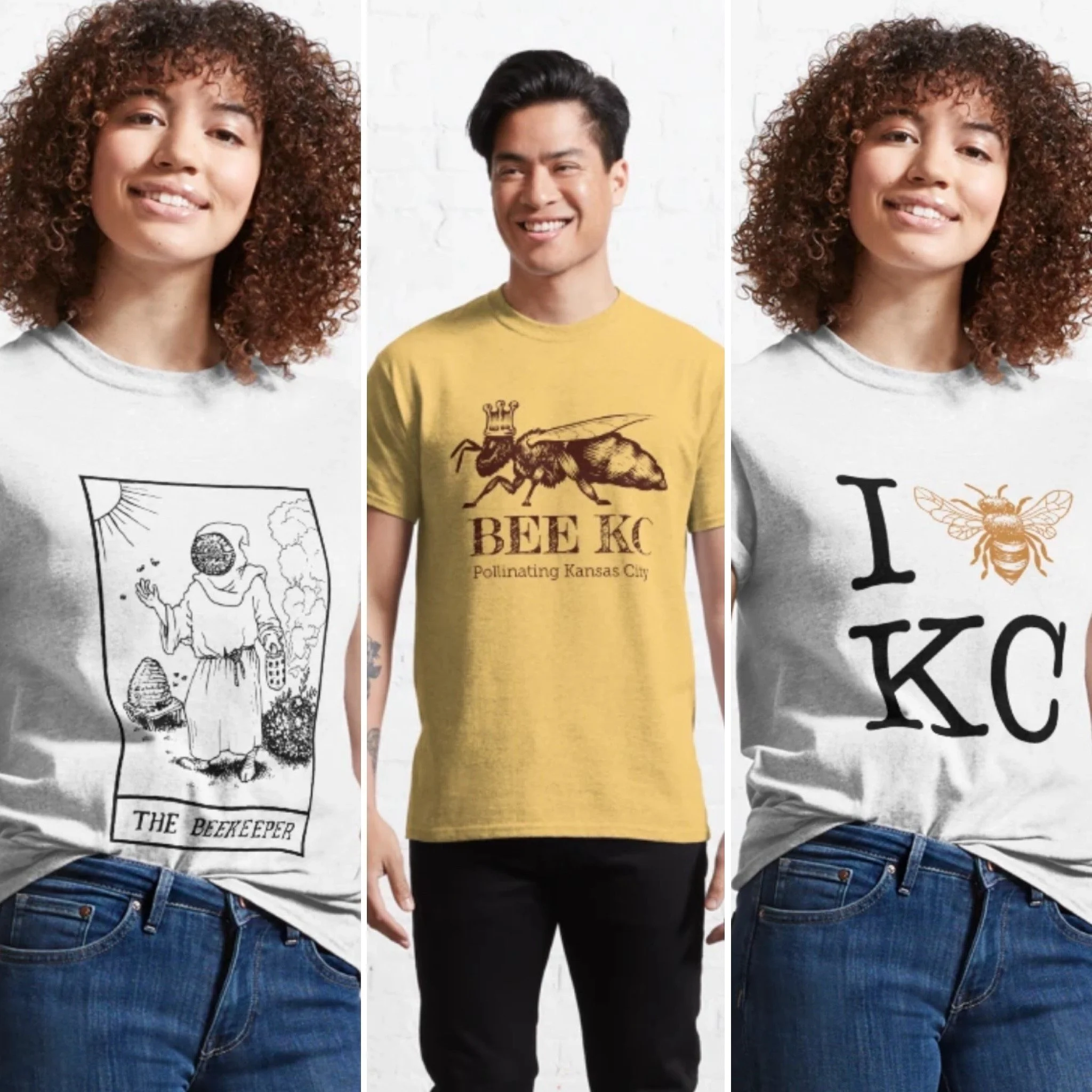In thinking over the email you sent, certain things occurred to me and a few ideas suggested themselves. In my first reply I listed difficulties faced by new bee businesses, but I’m equipped to sidestep most of these, I simply had never considered it. A few favorable factors:
Equipment: I already own everything needed for a little over 200 hives, including honey harvesting. No storage or space rental is needed, and overhead is remarkably low (bees, empty jars, and incidentals like pest-prevention materials). I’ve purchased everything myself and not through the nonprofit, so that I could retain ownership in any circumstance.
Labor: Over the last few years I’ve maintained 170+ hives, the only help being with initial hive & hive stand placement. This includes harvesting and selling weekly at the City Market. Additionally, many people volunteer their time through the nonprofit, but would also happily trade labor for opportunities to learn beekeeping.
Price: As I mentioned in the email, averages vary but the lower end wholesale price per pound is $2.50, and average farmers’ market prices are in the neighborhood of $9. I do around $18 per pound on average as I have smaller specialty items that increase margin. The City Market is arguably one of the best places in town to sell honey, as you get regular food shoppers but also out-of-towners and locals ready for bigger purchases. Also great exposure.
Brand: I’ve built up good local visibility, particularly on socials and SEO. (Check out the press page for some coverage.) One good place to judge reach is in random google searches; throughout the year I get calls and emails from folks interested in education opportunities or bee removal services. Having hives on spots like the KU Med campus and the Q39 roof boost visibility quite a bit. Beekeeping is huge on social media, especially things like gathering bees from trees or peoples’ homes.
Potential: I have not yet done the following, all of which are nice revenue sources: stocking in local stores, selling online, selling merch like stickers and shirts (which would go very well), seriously building tiktok/youtube/facebook, or specifically offering paid services. And this is what pops to mind quickly, there are certainly many more avenues to explore. Already having a mission-based nonprofit attached is a big plus, and there are lots of Agricultural or other type of grants available to even for-profit businesses that I simply haven’t had time to pursue.
There are more details that could be mentioned, but I didn’t want to go on too long. All told, the more I think about this the more I’m convinced it could be a great opportunity. The only reasons I haven’t already undertaken the leap are that I began as a nonprofit and that was my focus (though a business side could be easily folded in without conflict of interest), and the need for a relatively small investment for more bees and goods like merchandise. One other need is for sites to place hives: I have a list of people who have reached out with space over the last few years, and given your real estate expertise that might be easily solved.
I’ve put a few visuals below, and more can be found all over this site and at the instagram @beekcmo.
Logistics
Everything is already in place. No new equipment is needed, which is good considering how big an investment industrial equipment can be.
Product
Existing products include jars of raw honey ($12 for 1/2 pound, $20 for full pound), honey by the neighborhood ($15 for 1/2 pound), honey infused with local ingredients ($18 for 1/2 pound), Taster Flights ($25 for three 1.5 ounce jars), candles, and so on.
Merch
My wife and I do graphic design and illustration—the above are designs we made very quickly on the fly, we’re looking forward to doing better work as time frees up overwinter. One thing I’ve found—people absolutely love anything with bees or hexagons! Shirts, stickers, hats, tote bags, etc are all planned and net a good margin.




